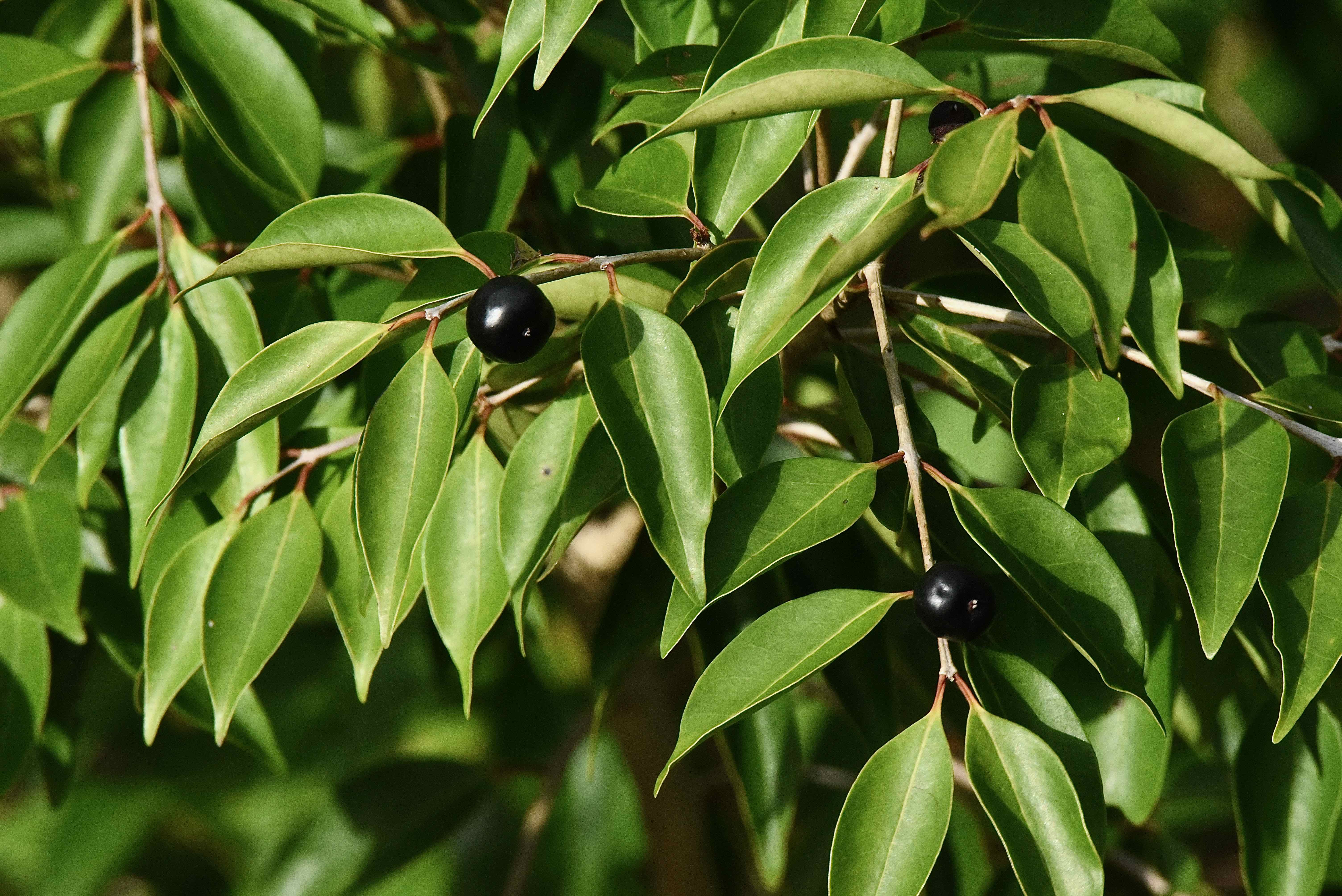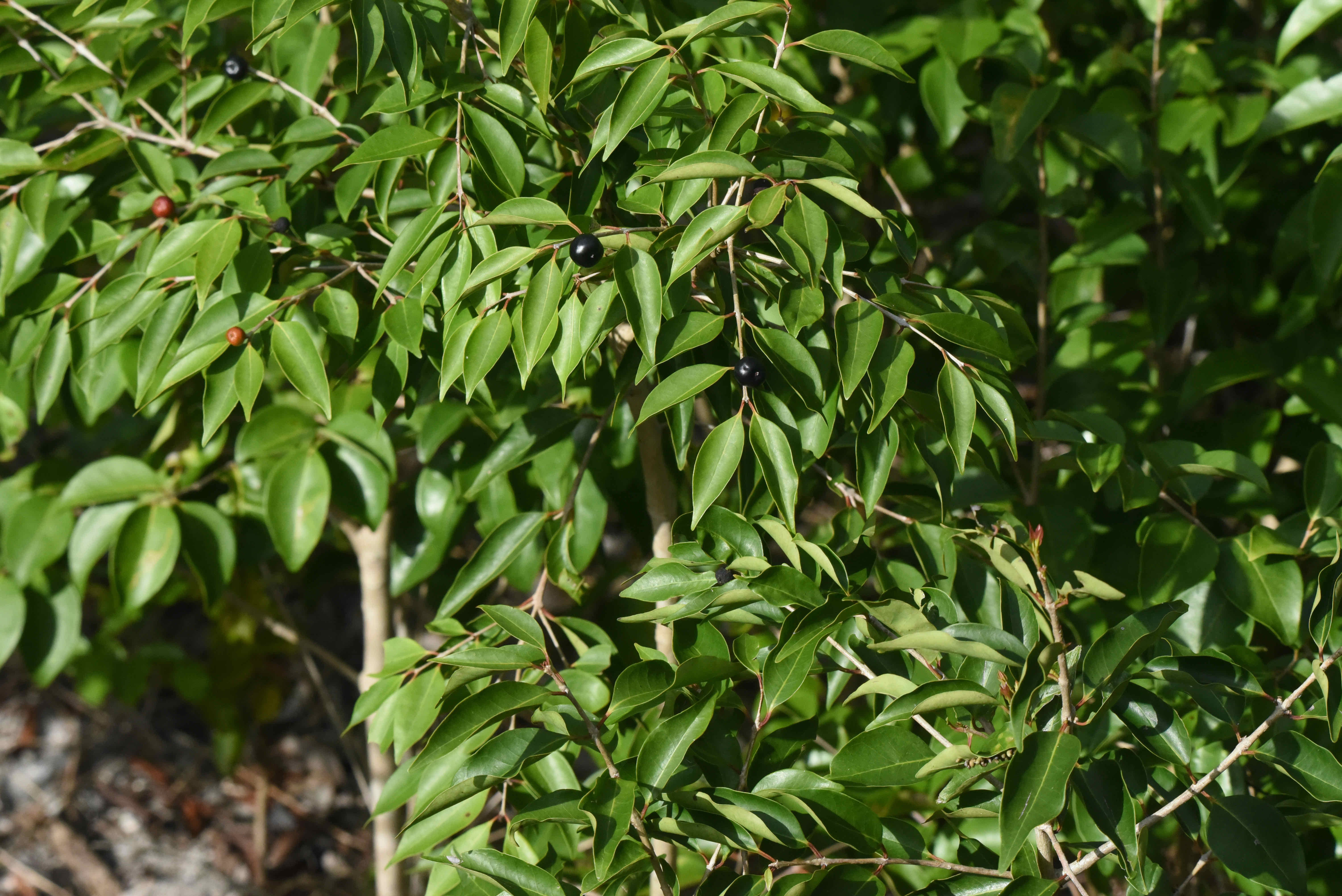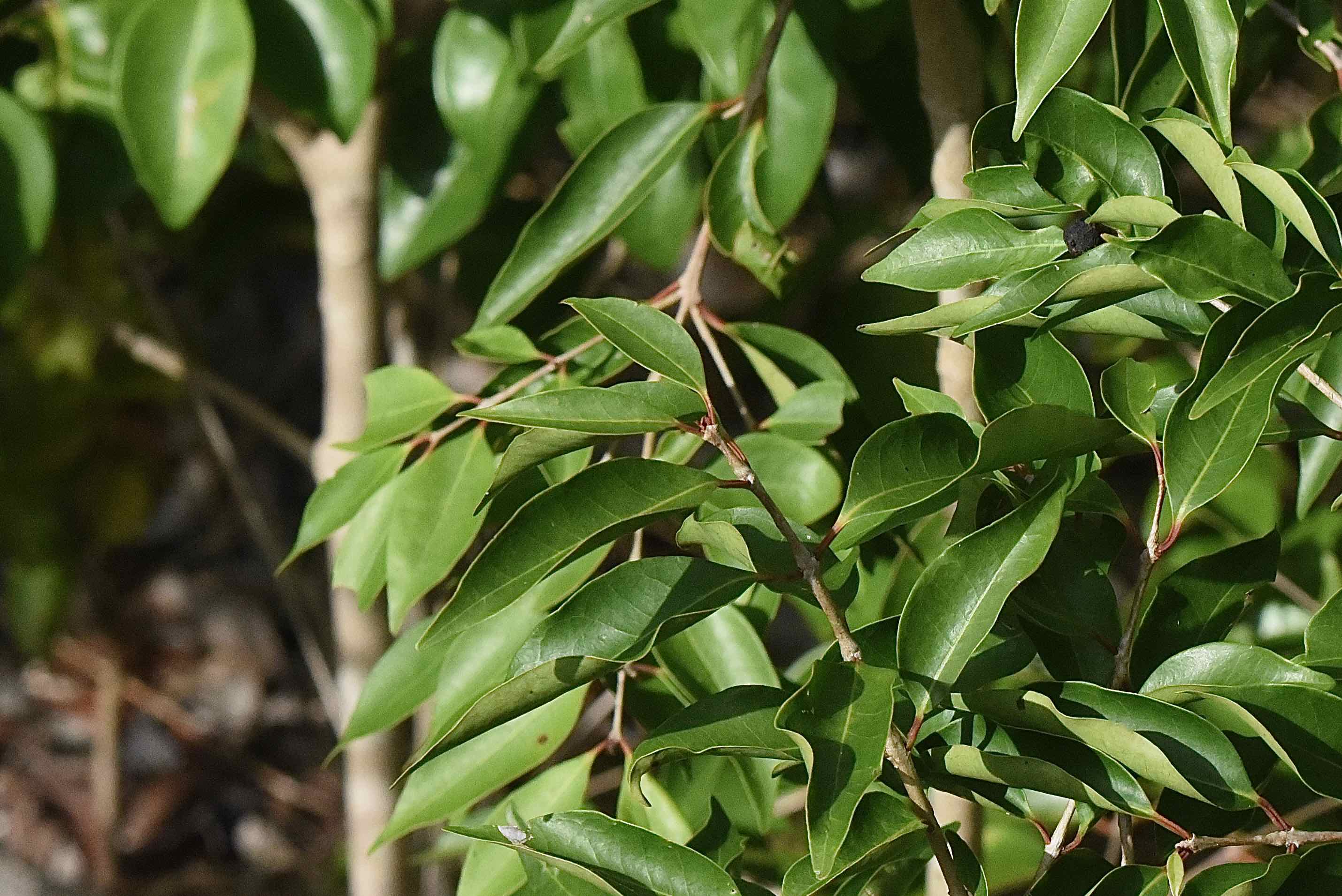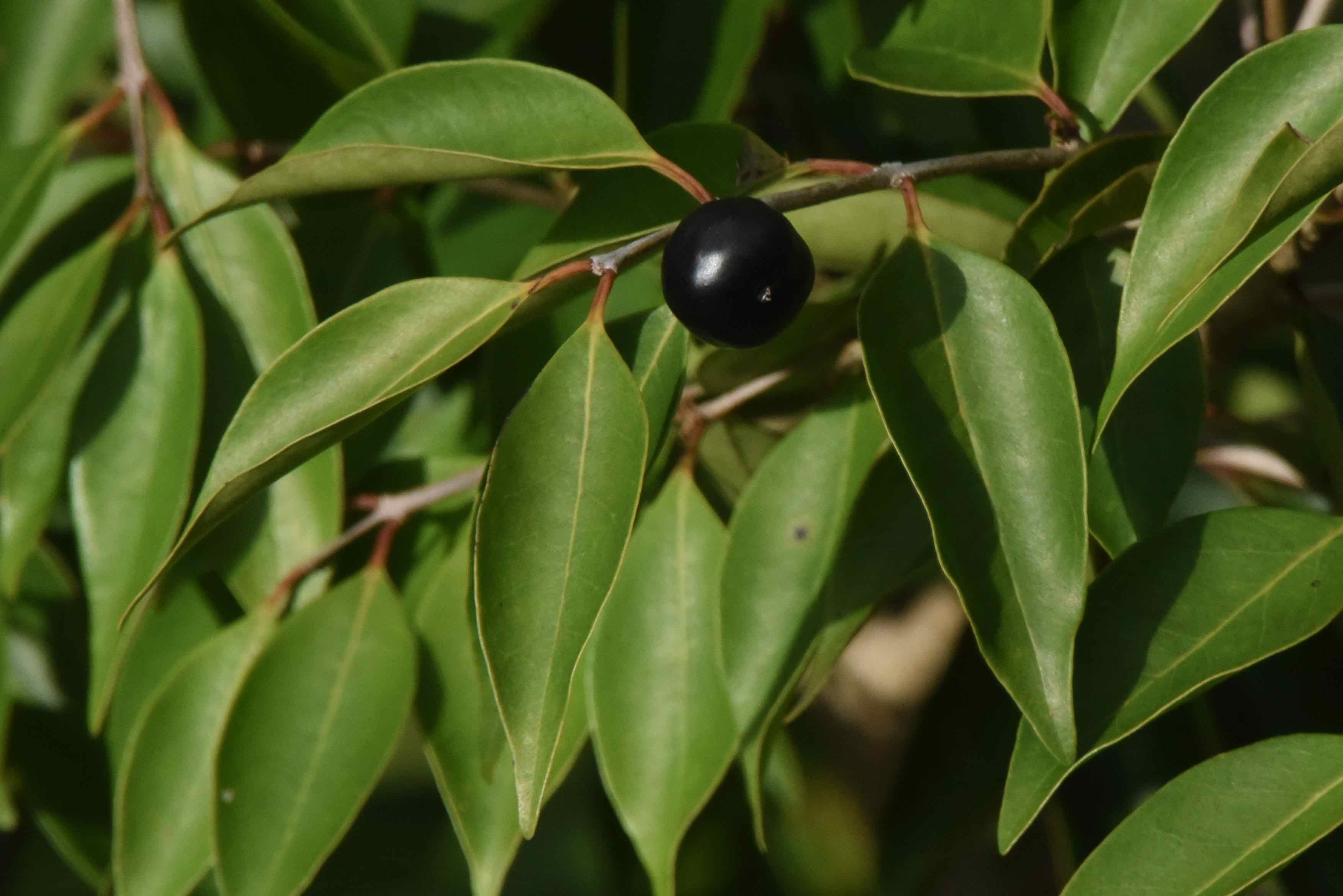
White stopper, photographed at Gumbo Limbo Nature Center, Boca Raton, Palm Beach County, in May 2022.
There are plants we use to make us “go.” There are plants we use to make us “stop” when we go too much. It might seem obvious that a group of plants called stoppers, including our subject for today, white stopper, would seem be in the latter category. In fact, it’s so obvious that it’s assumed to be the case.
But maybe not. Maybe there is another reason why these shrubby trees carry the stopper name. More in a bit.
White stopper, Eugenia axillaris, is a shrub or small tree native to Florida as well as Bermuda, the Caribbean and Central America. In Florida, it’s found in coastal counties as far north as St. John’s County on along the Atlantic and Levy County along the Gulf.
White stopper is found mainly in the understories of coastal hammocks. It usually grows as a shrub 10 to 15 feet tall, but can reach tree dimensions and approach a height of 30 feet here in South Florida.
The leaves are oval to ellipitical in shape, two to four inches long and about half that wide, the apex, or end point, can be sharp or round. They are dark green above, dull, not shiny, leathery to the touch, with a reddish petiole, or leaf stem. White stopper leaves are simple and arranged opposite each other along the branches. New leaves are red, turning green as they mature.
The bark of the trunk is ash white or gray, the inspiration for the first part of its common name, and smooth. The bark of the branches can be gray or brown.
Flowers form in clusters of four to eight at the leaf axils, the point where leaves meet the branch. They are white and “frilly” looking, blooming throughout the year, but peaking in spring and summer.
The fruit is a round berry about a half-inch in diameter that goes from green to dark red, almost black when ripe. Birds and small animals eat the fruit but it’s also food for us humans — the flesh is sweet, though the seeds are bitter and shouldn’t be eaten.
White stopper’s dense foliage provides cover for birds and other small animals.
White stopper grows in full sun or light shade, in variety of soils where there’s at least some organic matter. It’s both moderately drought and salt tolerant.
It’s also the kind of plant one might smell — or not — before he or she happens to see it, the result of 42 volatile compounds it produces in order to defend itself against leaf-munching insects and disease. We’ve seen the odor white stopper puts out described as “skunk-like” by some, “not unpleasant” by others. The odor comes and goes, apparently influenced by the weather.
As noted above, it’s generally assumed that white stopper and its cousin, Spanish stopper, get their name because of their use in traditional medicines to “stop” diarrhea. But Daniel Austin, the late Florida Atlantic University botany professor and expert on how we humans use plants, in his description of white stopper mentions only three uses: by the Seminoles to make bows; others use it as lumber to make posts and in cabinet-making. No medicinal uses. The Native American Ethnobotany website also mentions the use of the wood to make bows but nothing else.
So why might white stopper be a stopper? For the same reason that fetterbush is fetterbush and staggerbush is staggerbush. They ain't easy to walk through. White stopper’s branches are so dense that they present a natural barrier to anyone or anything trying to make their way through a hammock.
In fact, those dense branches, plus its good looks, make white stopper useful as a hedge. It’s also used as a specimen plant, in highway medians and in parking lots.
White stopper is a member of Myrtaceae, the myrtle family.



